The Boeing
Latest Stories

AP24024600380273.jpg
Boeing CEO Dave Calhoun departs after a meeting in the office of Sen. Mark Warner, D-Va., at the Capitol in Washington, Wednesday, Jan. 24, 2024. Part of the Boeing 737 MAX 9 fleet was grounded following a mid-air cabin panel blowout on an Alaska Airlines flight. (AP Photo/J. Scott Applewhite)
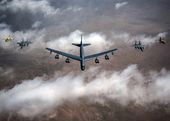
39788630883_7f31722c30_o
The Boeing B-52 Stratofortress is an American long-range, jet-powered strategic bomber. The B-52 was designed and built by Boeing, which has continued to provide support and upgrades. It has been operated by the United States Air Force since the 1950s. The bomber is capable of carrying up to 70,000 pounds of weapons, and has a typical combat range of more than 8,800 miles without aerial refueling. Beginning with the successful contract bid in June 1946, the B-52 design evolved from a straight wing aircraft powered by six turboprop engines to the final prototype YB-52 with eight turbojet engines and swept wings. The B-52 took its maiden flight in April 1952. Built to carry nuclear weapons for Cold War-era deterrence missions, the B-52 Stratofortress replaced the Convair B-36. A veteran of several wars, the B-52 has dropped only conventional munitions in combat. The B-52 has been in active service with the USAF since 1955. As of December 2015, 58 were in active service with 18 in reserve. The bombers flew under the Strategic Air Command (SAC) until it was disestablished in 1992 and its aircraft absorbed into the Air Combat Command (ACC); in 2010 all B-52 Stratofortresses were transferred from the ACC to the newly created Air Force Global Strike Command (AFGSC). Superior performance at high subsonic speeds and relatively low operating costs have kept the B-52 in service despite the advent of later, more advanced aircraft, including the canceled Mach 3 B-70 Valkyrie, the variable-geometry B-1 Lancer, and the stealth B-2 Spirit. The B-52 completed sixty years of continuous service with its original operator in 2015. After being upgraded between 2013 and 2015, it is expected to serve into the 2050s. (U.S. Air Force photo by Senior Airman Malcolm Mayfield)

2_262018_b3-landrith8201.jpg
Illustration of the Boeing TX trainer by Alexander Hunter/The Washington Times

20171018hunter.jpg
Play the Boeing / Iran Deal Jackpot Game! (Illustration by Alexander Hunter for The Washington Times)
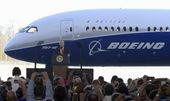
trump-made_in_america_27681.jpg
FILE - In this Friday, Feb. 17, 2017, file photo, U.S. President Donald Trump speaks in front of a Boeing 787 Dreamliner while visiting the Boeing South Carolina facility in North Charleston, S.C. Trump’s push to get Americans to embrace goods “Made in USA” is harder than it looks. Few products are American-made only. Trump himself signs laws with gold-plated pens assembled in Rhode Island but lacquered and engraved in China. He praises U.S. industrial might in front of a Boeing jet whose parts are 30 percent foreign-made. And there’s a good reason why this is the case: U.S. manufacturers rely on global supply chains and Americans buy foreign goods because they prefer lower prices. (AP Photo/Susan Walsh, File)

boeing-jet_tests_halted_14412.jpg
FILE - In this March 7, 2017, file photo, the first of the large Boeing 737 MAX 9 models, Boeing's newest commercial airplane, sits outside its production plant in Renton, Wash. Boeing stops test flights of its new 737 model because of a possible problem in engine discs. The company is working with engine maker CFM to investigate. The company said Wednesday, May 10, 2017, it was notified of a potential manufacturing-quality issue by CFM, which makes the engines that are going on the Boeing 737 Max. (AP Photo/Elaine Thompson, File)
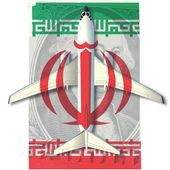
4_252017_b1maylgboeingiran8201.jpg
Illustration on the Boeing/Iran airbus deal by Linas Garsys/The Washington Times

trump_96917.jpg
President Donald Trump speaks at the Boeing South Carolina facility in North Charleston, S.C., Friday, Feb. 17, 2017, where he went to see the Boeing 787 Dreamliner. Trump visited the plant before heading to his Mar-a-Lago estate in Palm Beach, Fla. for the weekend. (AP Photo/Susan Walsh)

Trump_29885.jpg-3deba.jpg
President Donald Trump speaks while visiting the Boeing South Carolina facility in North Charleston, S.C., Friday, Feb. 17, 2017, to see the Boeing 787 Dreamliner. (AP Photo/Susan Walsh)
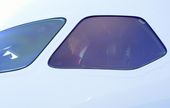
trump_78957.jpg
President Donald Trump sits in the cockpit of the Boeing 787 Dreamliner while visiting the Boeing South Carolina facility in North Charleston, S.C., Friday, Feb. 17, 2017. Trump visited the plant before heading to his Mar-a-Lago estate in Palm Beach, Fla. for the weekend. (AP Photo/Susan Walsh)
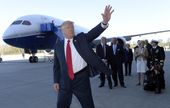
trump_91214.jpg
President Donald Trump waves in front of the Boeing 787 Dreamliner while visiting the Boeing South Carolina facility in North Charleston, S.C., Friday, Feb. 17, 2017. Trump is visiting Boeing before heading to his Mar-a-Lago estate in Palm Beach, Fla., for the weekend. (AP Photo/Susan Walsh)
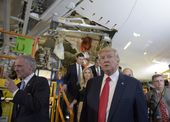
trump_90893.jpg
President Donald Trump tours the Boeing South Carolina facility in North Charleston, S.C., with South Carolina Gov. Henry McMaster, left, Friday, Feb. 17, 2017, to see the Boeing 787 Dreamliner. Trump is visiting Boeing before heading to his Mar-a-Lago estate in Palm Beach, Fla., for the weekend. (AP Photo/Susan Walsh)
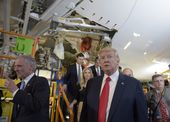
Trump_90893.jpg-133a5.jpg
President Donald Trump tours the Boeing South Carolina facility in North Charleston, S.C., with South Carolina Gov. Henry McMaster, left, Friday, Feb. 17, 2017, to see the Boeing 787 Dreamliner. Trump is visiting Boeing before heading to his Mar-a-Lago estate in Palm Beach, Fla., for the weekend. (AP Photo/Susan Walsh)
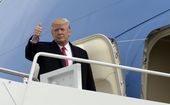
Trump_97591.jpg-9d18a.jpg
President Donald Trump gives a thumbs-up from the top of the steps of Air Force One at Andrews Air Force Base in Md., Friday, Feb. 17, 2017. Trump is visiting the Boeing South Carolina facility to see the Boeing 787 Dreamliner before heading to his Mar-a-Lago estate in Palm Beach, Fla., for the weekend. (AP Photo/Susan Walsh)
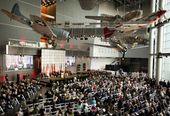
world_war_ii_museum_digital_collection_82873.jpg
FILE - This Dec. 12, 2014 file photo shows visitors attending the opening of The National World War II Museum's exhibit, entitled "The Road to Berlin," at the Boeing Freedom Pavilion, in New Orleans. Executives at the National World War II Museum say creating a vast online collection of 9,000 existing oral and written histories will take longer than the war was fought: 10 years and $11 million dollars. The task is enormous: thousands of hours of audio and video must be handled and millions of words transcribed. (John McCusker/The Advocate via AP, File)
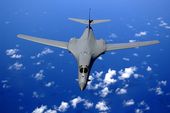
B-1B_over_the_pacific_ocean
AIR FORCE - B-1B Lancer is a four-engine supersonic variable-sweep wing, jet-powered heavy strategic bomber used by the United States Air Force (USAF). It was first envisioned in the 1960s as asupersonic bomber with Mach 2 speed, and sufficient range and payload to replace the Boeing B-52 Stratofortress. It was developed into the B-1B, primarily a low-level penetrator with long range and Mach 1.25 speed capability at high altitude. It is commonly called the "Bone" (originally from "B-One"). Designed by Rockwell International (now part of Boeing), development was delayed multiple times over its history due to changes in the perceived need for piloted bombers. The initial B-1A version was developed in the early 1970s, but its production was canceled, and only four prototypes were built. The need for a new platform once again surfaced in the early 1980s, and the aircraft resurfaced as the B-1B version with the focus on low-level penetration bombing. However, by this point, development of stealth technology was promising an aircraft of dramatically improved capability. Production went ahead as the B version would be operational before the "Advanced Technology Bomber" (which became the B-2 Spirit), during a period when the B-52 would be increasingly vulnerable. The B-1B entered service in 1986 with the USAF Strategic Air Command (SAC) as a nuclear bomber. In the early 1990s, following the Gulf War and concurrent with the disestablishment of SAC and its reassignment to the newly formed Air Combat Command (ACC), the B-1B was converted to conventional bombing use. It first served in combat during Operation Desert Fox in 1998 and again during the NATO action in Kosovo the following year. The B-1B has supported U.S. and NATO military forces in Afghanistan and Iraq. The B-1B is expected to continue to serve into the 2030s, with the Long Range Strike Bomber to start supplementing the B-1B in 2030. (U.S. Air Force Photo by Staff Sgt. Bennie J. Davis III)
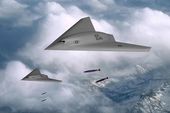
x45c
BOEING X-45C Role: Unmanned Combat Air Vehicle Manufacturer: Boeing Integrated Defense Systems Status: Under development The Boeing X-45 unmanned combat air vehicle is a concept demonstrator for a next generation of completely autonomous military aircraft, developed by Boeing's Phantom Works. Manufactured by Boeing Integrated Defense Systems, the X-45 was a part of DARPA's J-UCAS project. The larger X-45B design was modified to have even more fuel capacity and three times greater combat range, becoming the X-45C. Each wing's leading edge spans from the nose to the wingtip, giving the aircraft more wing area, and a planform very similar to the B-2 Spirits'. The first of the three planned X-45C aircraft was originally scheduled to be completed in 2006, with capability demonstrations scheduled for early 2007. By 2010, Boeing hoped to complete an autonomous aerial refueling of the X-45C by a KC-135 Stratotanker. Boeing has displayed a mock-up of the X-45C on static displays at many airshows. The X-45C portion of the program received $767 million from DARPA in October 2004, to construct and test three aircraft, along with several supplemental goals. The X-45C included an F404 engine.[4] In July 2005, DARPA awarded an additional $175 million to continue the program, as well as implement autonomous Aerial refueling technology. On March 2, 2006, the US Air Force decided not to continue with the X-45 project. However, Boeing submitted a proposal to the Navy for a carrier based demonstrator version of the X-45, designated the X-45N.
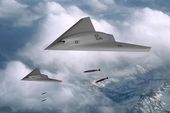
x-45c
BOEING X-45C Role: Unmanned Combat Air Vehicle Manufacturer: Boeing Integrated Defense Systems Status: Under development The Boeing X-45 unmanned combat air vehicle is a concept demonstrator for a next generation of completely autonomous military aircraft, developed by Boeing's Phantom Works. Manufactured by Boeing Integrated Defense Systems, the X-45 was a part of DARPA's J-UCAS project. The larger X-45B design was modified to have even more fuel capacity and three times greater combat range, becoming the X-45C. Each wing's leading edge spans from the nose to the wingtip, giving the aircraft more wing area, and a planform very similar to the B-2 Spirits'. The first of the three planned X-45C aircraft was originally scheduled to be completed in 2006, with capability demonstrations scheduled for early 2007. By 2010, Boeing hoped to complete an autonomous aerial refueling of the X-45C by a KC-135 Stratotanker. Boeing has displayed a mock-up of the X-45C on static displays at many airshows. The X-45C portion of the program received $767 million from DARPA in October 2004, to construct and test three aircraft, along with several supplemental goals. The X-45C included an F404 engine.[4] In July 2005, DARPA awarded an additional $175 million to continue the program, as well as implement autonomous Aerial refueling technology. On March 2, 2006, the US Air Force decided not to continue with the X-45 project. However, Boeing submitted a proposal to the Navy for a carrier based demonstrator version of the X-45, designated the X-45N.
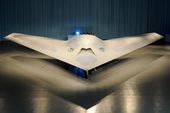
PhantomRay
BOEING PHANTOM RAY Role: Unmanned Combat Air Vehicle Manufacturer: Boeing Integrated Defense Systems Status: Under development The Boeing Phantom Ray is an American demonstration stealth unmanned combat air vehicle being developed by Boeing using company funds. The autonomous Phantom Ray is a flying wing around the size of a conventional fighter jet, and first flew in April 2011. It will conduct a program of test flights involving surveillance, ground attack and autonomous aerial refueling missions. The developers say it can carry 4,500 pounds of payload.

x-45c
BOEING X-45C Role: Unmanned Combat Air Vehicle Manufacturer: Boeing Integrated Defense Systems Status: Under development The Boeing X-45 unmanned combat air vehicle is a concept demonstrator for a next generation of completely autonomous military aircraft, developed by Boeing's Phantom Works. Manufactured by Boeing Integrated Defense Systems, the X-45 was a part of DARPA's J-UCAS project. The larger X-45B design was modified to have even more fuel capacity and three times greater combat range, becoming the X-45C. Each wing's leading edge spans from the nose to the wingtip, giving the aircraft more wing area, and a planform very similar to the B-2 Spirits'. The first of the three planned X-45C aircraft was originally scheduled to be completed in 2006, with capability demonstrations scheduled for early 2007. By 2010, Boeing hoped to complete an autonomous aerial refueling of the X-45C by a KC-135 Stratotanker. Boeing has displayed a mock-up of the X-45C on static displays at many airshows. The X-45C portion of the program received $767 million from DARPA in October 2004, to construct and test three aircraft, along with several supplemental goals. The X-45C included an F404 engine.[4] In July 2005, DARPA awarded an additional $175 million to continue the program, as well as implement autonomous Aerial refueling technology. On March 2, 2006, the US Air Force decided not to continue with the X-45 project. However, Boeing submitted a proposal to the Navy for a carrier based demonstrator version of the X-45, designated the X-45N.


